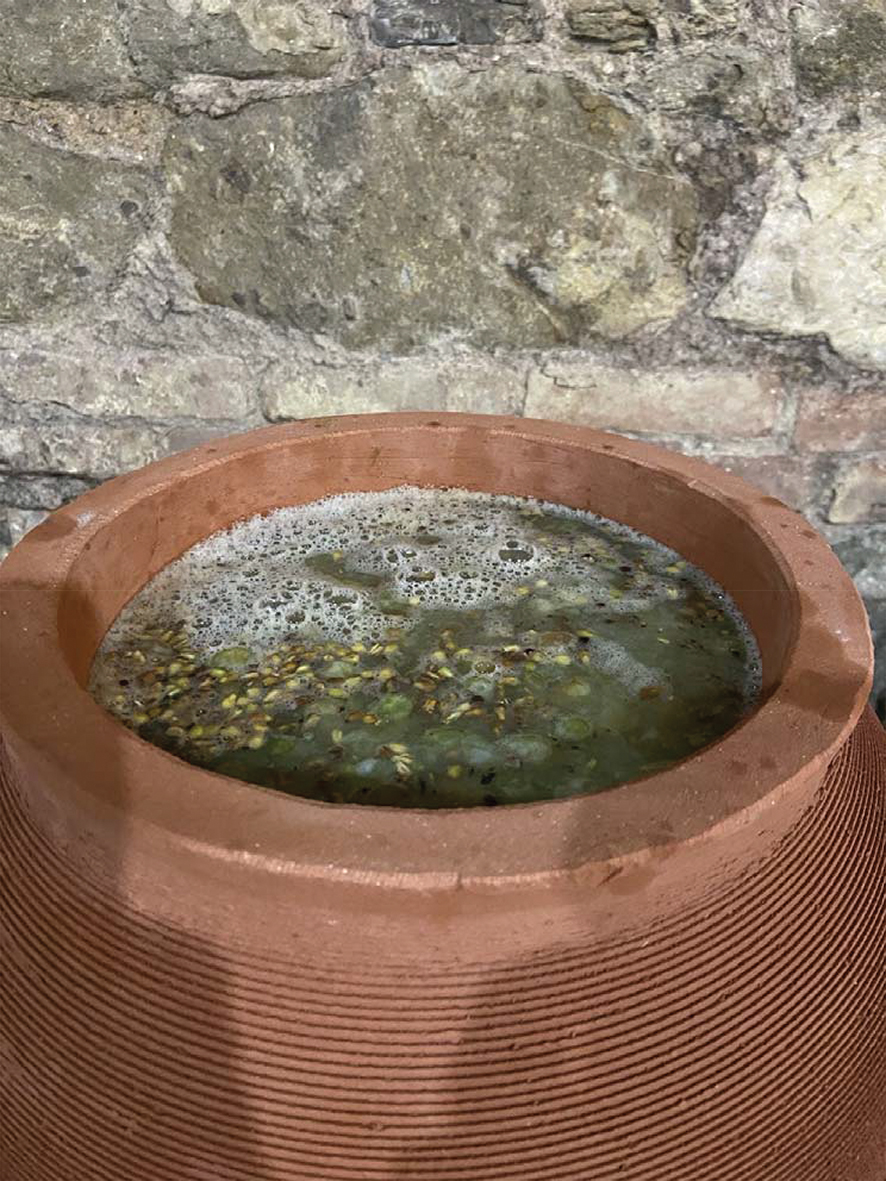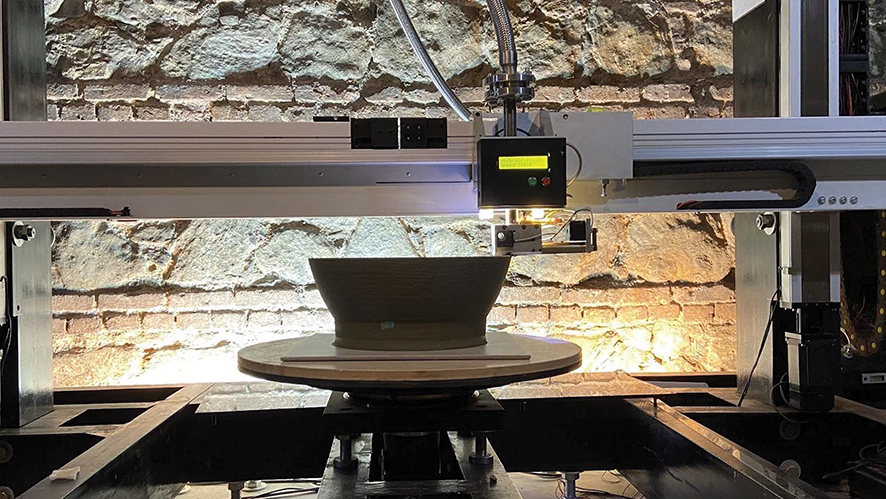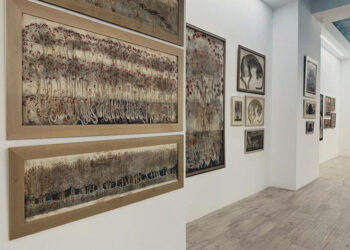One of Georgia’s longest-lasting contributions to the world has been the lucrative liquid of quality wine. From humble table wine to prized bottles from over a decade ago, there are over 500 grape varieties. The country truly has a bottle for everyone. Even a visit to some of the nation’s villages will show that many families still use the ancient methods for their own creations.
However, making the traditional qvevri is a time-consuming and often expensive affair, a fact excessively burdensome for people making wine commercially in large batches. This is where David Mizandari and the Qvevry Research Company come in. His stated goal is: “Protecting cultural heritage with modern technologies and passing it on to the new generation.”
David notes the current market of qvevri manufacturing as incorrect, going against the true traditions of Georgian winemaking. He notes that virtually all of the qvevri in the country are lined with beeswax, which takes away the natural properties of the clay. “The wine doesn’t come into contact with the clay at all, and here the main function of the qvevri is lost,” David tells GEORGIA TODAY, adding that they are also often coated on the outside with cement to reinforce their strength when buried.

“Unfortunately, such qvevris have become standard today,” he laments. Because of these poor construction techniques, many winemaking companies either break away from using the traditional methods, or import qvevris from abroad. “In today’s qvevri making, the complete cycle, from clay preparation to firing, is broken,” David states, adding that half of the qvevri used end up leaking or cracking, destroying the wine and incurring immense repair costs for the winemakers.
But David believes the ancient traditions are not all lost. He has built a 3D printing system specifically for making the prized qvevri. “This new machine combines both a 3D printing mechanism and special tools for creating qvevri, which builds a qvevri with natural Georgian clay, exactly as it was made centuries ago by our ancestors.” These versions, he says, have the precise thickness and porosity so as to avoid the unnecessary beeswax and cement.
“The process is standardized,” he explains, “we use well-processed Georgian clay.” The process, using his one-of-a-kind machine, can create a 1 ton qvevri in only eight hours. By contrast, the current hand-making method can take up to four months to create a similar product, and will still require the aforementioned treatments.
David explains that the research for his creation began in the National Archives of Georgia. “We searched for manuscripts and books about how qvevris were made by our ancestors,” he says, noting that GIZ (Deutsche Gesellschaft für Internationale Zusammenarbeit), a German government development agency, had a study on Georgian clay. “As a result of the analysis and reconciliation of these many materials, we conducted tests on Georgian clay mixtures for one year, including the refinement of the clay-firing process, which is one of the most difficult components in qvevri production.”
“During the research phase, we needed to find a lot of information, and meetings were held with leading ceramicists as well as microbiologists and winemakers.”
The work paid off, he says, and “the grapes were fermented in our qvevri by a bio-winemaker and the results were the best and most unique, never seen before.” The rest was left up to David and his team. In the end, the final product outperformed the clay-beeswax-cement method. “The wall of the qvevri made of such clay is porous, the wine does not leak into it, it is strong and does not need to be waxed from the inside or cemented from the outside.”
“In our qvevri,” David proudly explains, “the wine has direct contact with the porous surface of the wall, from which micro- and nano-air bubbles are supplied to the grape juice, which supports the fermentation/micro-oxidation process for months, which is the direct purpose of the qvevri.” He states firmly that “in a properly made qvevri, wine ‘lives’ for months and years, and continues aging naturally.”

David says his company, Qvevry, will be entering the market this year with the aim of revolutionizing the winemaking sector and bringing it back to its ancient roots.
“We already have a long waiting list, and we are also being contacted by winemakers from abroad,” he says, explaining that his export qvevri will only be made of pure Georgia clay. “With such a method, it will be possible to preserve cultural heritage, ensure its sustainability for the next hundreds of years, and pass it on to new generations.”
His methods have already won him and his team Georgian Innovation and Technology Agency grants.
David’s innovative and sustainable method of preserving the traditional ways of qvevri production and winemaking as a whole seems to have already developed a community of dedicated clientele. Small and large wineries across the country have convinced professional winemakers that this combination of tradition and modern technology is the answer they’ve been waiting for. Despite a history stretching back to 6,000 BC, and centuries of perfection, a new chapter in Georgian winemaking may be drawing upon the country.
Interview by Michael Godwin














